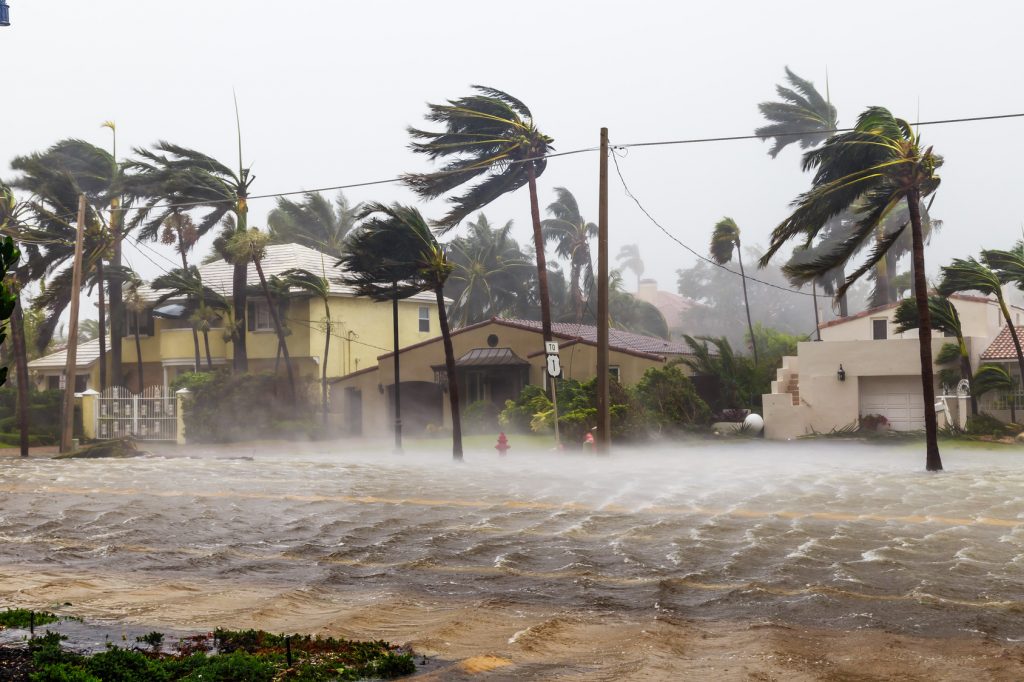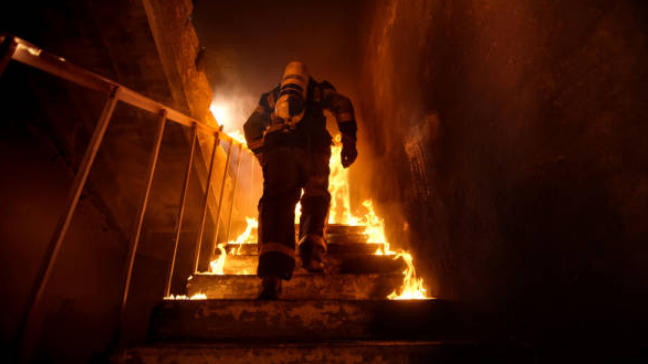
Coastal Flooding in Texas / Hurricanes and Storms / Flash Floods
Texas is one of the most vulnerable states in the U.S. for flooding. With creeks, draws, bayous, coasts, and rivers that can flood any time there is enough rain, Texas is routinely one of the top three U.S. states in flood related damages each year. There are an estimated 6 million people in Texas who live in areas that are vulnerable to flooding. Most major cities in Texas are either located along the Gulf Coast which is vulnerable to hurricanes, or in “Flash Flood Alley,” one of the most vulnerable areas in the U.S. to flash flooding.
The storms that have caused the most flooding and water damage in Texas are tropical storms and hurricanes coming from the Gulf Coast. The following are the worst hurricanes to affect Texas:
- The 1900 Storm: This category 4 storm hit Galveston, TX with little warning. Around 6000 people were killed as a result of this storm which makes this one of the deadliest hurricanes in the history of the U.S. The Galveston Seawall was built after this storm.
- The 1915 Storm: This storm also hit Galveston, TX and put the Seawall to the test. While only 11 people died in this storm, it still resulted in $50 million in damages caused by flooding and 145 mph winds.
- Hurricane Carla: Hurricane Carla was a category 4 storm that hit near Port O’Connor, TX in 1961. It resulted in 35 deaths, destroyed almost 2000 homes, and caused the formation of a tornado in Channelview, TX.
- Hurricane Alicia: Hurricane Alicia hit Galveston in 1983 with 115 mph winds and moved up to Houston. This storm caused 21 deaths and $1.7 billion in damages.
- Tropical Storm Allison: This storm affected Houston, TX in 2001, resulting in 23 deaths. It damaged 70,000 homes in Houston and caused $5 billion in total damages.
- Hurricane Ike: Hurricane Ike hit the Bolivar Peninsula in 2008 as a category 2 storm and killed around 100 people. It also resulted in $30 billion in damages.
- Hurricane Harvey: Hurricane Harvey hit the Houston, TX area in 2017, bringing more than 30 inches of rain to parts of Houston and as much as 60 inches of rain to Nederland, TX. This storm killed 103 people and resulted in $125 billion in damages.

The storms and flooding are only expected to get worse in Texas as higher global temperatures are causing more severe rain events with heavier precipitation. Rising sea levels also caused the coastlines in Texas to retreat an average of 4 feet per year between 2000 and 2019. This is greatly increasing the floodplains throughout Texas which puts more people and property at risk of flooding. Residents of Texas are urged to purchase flood insurance, even if they do not live in a high-risk floodplain.
The following are important flood statistics to keep in mind from Texas Flood Insurance:
- Half of the 12 highest rainfall amounts ever recorded in a 24-hour period throughout the world happened in Texas.
- Flash flooding is the biggest natural disaster threat in Central Texas.
- Texas experienced 4,722 flash floods between 1986 and 2000 according to a study by Blue Ribbon.
- The same Blue Ribbon study found that three million structures built on floodplains were not protected with flood insurance.
- Texas experienced 35 trillion gallons of rain in May 2015, which is enough rain to cover the entire state of Texas with 8 inches.
- There were 9,950 flood insurance claims that totaled $486.46 million in claims in Texas in 2015.
- There were seven federally declared disasters from flooding in Texas between 2013 and 2016.
If your home or business is damaged by water or flooding in Texas, it is important to call a local water damage restoration professional right away.
Fire Damage Statistics for Texas
The state of Texas is affected by home, structure, and vehicle fires like any other state, and it is also one of the states routinely affected by wildfires. In 2023, more than 7500 wildfires burned more than 205,000 acres which is down from more than 12,000 wildfires burning more than 650,000 acres in 2022 according to the Texas A&M Forest Service. One of the worst years on record for wildfires is 2011 when 30,896 wildfires burned almost 4 million acres.
Texas Wildfires

In 2024, Texas has already experienced the largest wildfire in the history of the state. On February 26, 2024, dry, warm, and windy conditions led to the ignition of the Smokehouse Creek Fire in Hutchinson County. In a little over a week, wildfires in the Texas Panhandle, including the Smokehouse Creek Fire and Magenta Fire, burned around 1.25 million acres, which is equal to the amount of land burned by wildfires over several years.
These Texas Panhandle fires have caused many to lose their homes, farms, and ranches. The complete toll of these fires is not yet known at the time of this writing. These fires are created by conditions that include dryness, strong winds, and high temperatures and they quickly burn through dry grass and vegetation. Climate change also contributes to these conditions by making this area hotter and drier. In fact, 32 additional days of fire weather have developed in the Texas High Plains between 1973 and 2022. This means that the risk of wildfires is only going to get worse.
Residents and businesses in vulnerable areas must be prepared for the possibility of wildfires to protect themselves and their property.
Non-wildfire Related Fires and Losses

When it comes to non-wildfire related fires and losses, Texas experiences lower rates of deaths and injuries than the national average. According to statistics from the NFIRS for 2021, Texas averaged 1.6 deaths and 5.3 injuries per 1000 fires compared to national averages of 2.3 deaths and 7.2 injuries. Texas is also below the national averages in residential structure fires with 4.1 deaths and 18.8 injuries compared to national averages of 6.5 deaths and 20.9 injuries per 1000 fires.
The following are the percentage of deaths that occurred for each type of fire incident in 2021 compared to the national average:
- Structure fires: 53% (national average: 74.5%)
- Residential structure fires: 51% (national average: 70.9%)
- Vehicles: 47% (national average: 21.2%)
- Outside: 0% (national average: 3.0%)
The following are the percentage of injuries that occurred for each type of fire incident in 2021:
- Structure fires: 78.9% (national average: 82%)
- Residential structure fires: 69.8% (national average: 74.1%)
- Vehicles: 13.3% (national average: 9.2%)
- Outside: 6.3% (national average: 5.7%)
The following are the percentage of firefighter injuries that occurred for each type of fire incident in 2021:
- Structure fires: 81.3% (national average: 79%)
- Residential structure fires: 63.1% (national average: 56.7%)
- Vehicles: 10.1% (national average: 7%)
- Outside: 8.1% (national average: 13%)
Fire and smoke damage, whether from a fire started within a home or building or a wildfire, can cause immense damage to your property while putting your health in danger. You need to call a fire damage restoration professional immediately after experiencing a fire to save as much of your property as possible.

Texas Water and Fire Restoration Services
There are many reputable contractors throughout the state of Texas who provide quality water damage and fire damage restoration services to help homes and businesses damaged by fires, floods, and storms. You can reach out to local disaster restoration professionals in Texas 24 hours a day.
Need help now? Call your local restoration contractor at (888) 915-7197.
Texas Restoration & Cleaning Leads
Are you a disaster restoration company looking for more leads in TX? Check out our registration page and see how you can join our lead generation program!
Thank you for visiting us.



